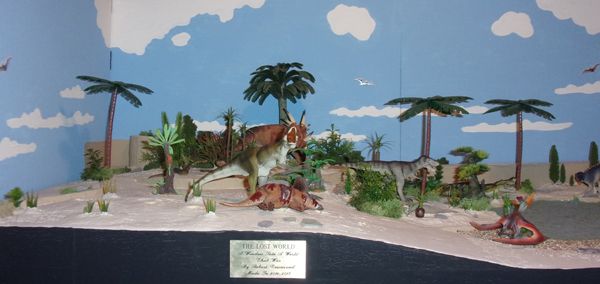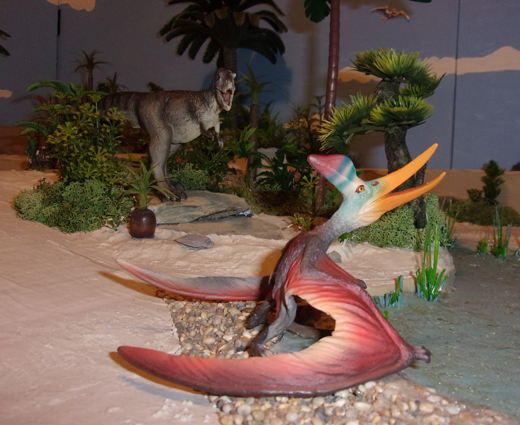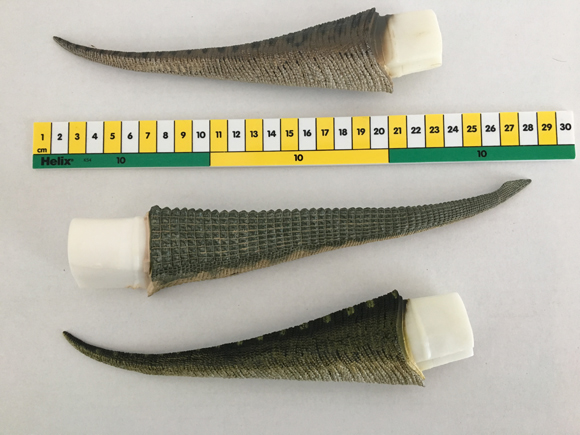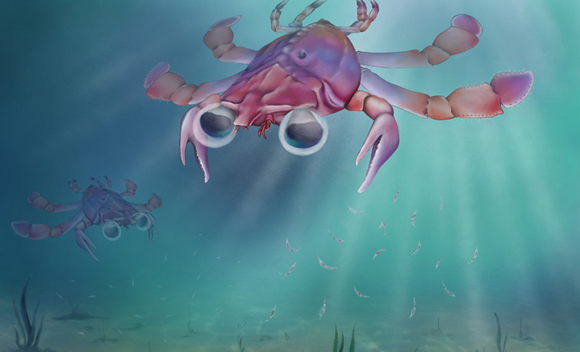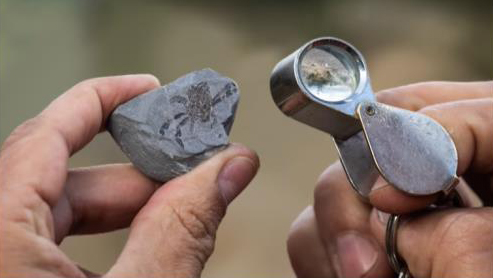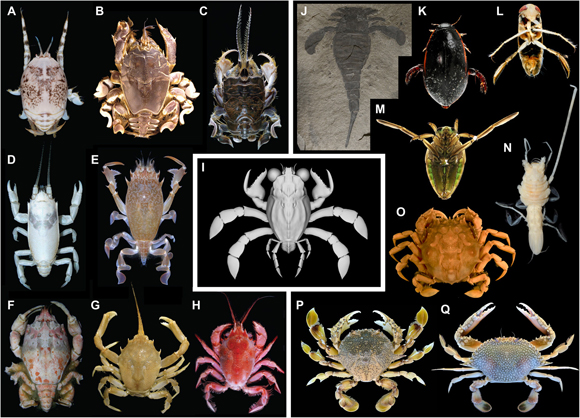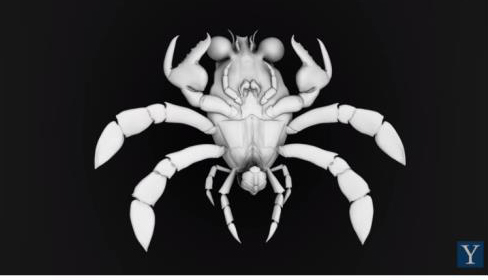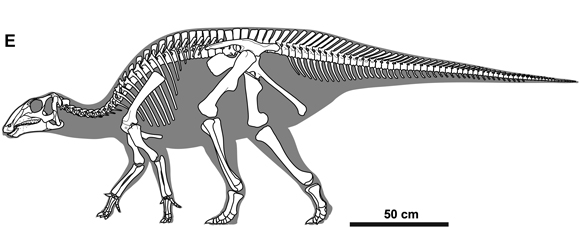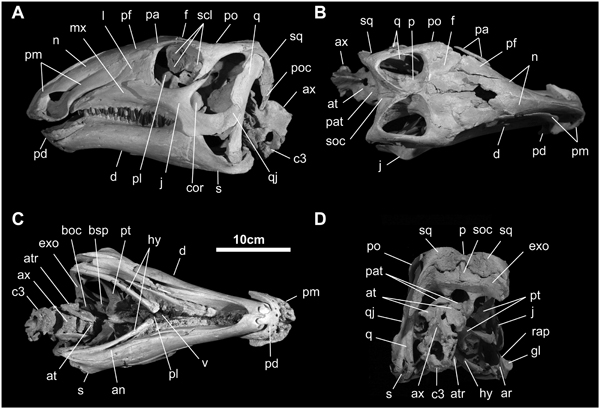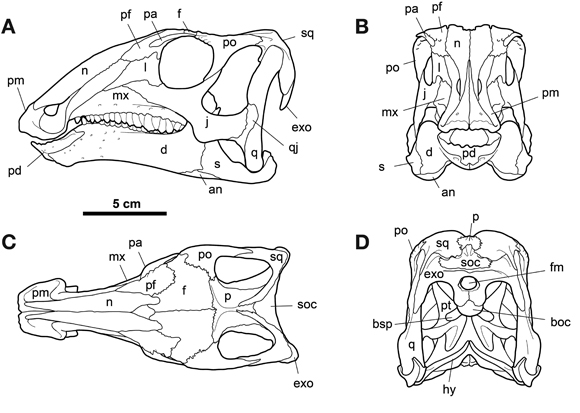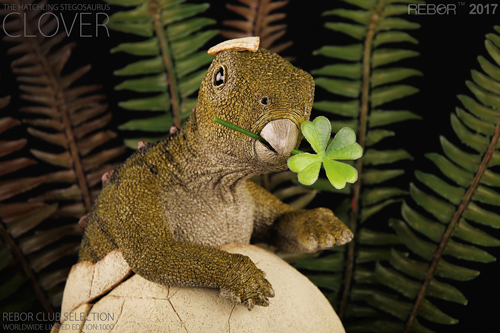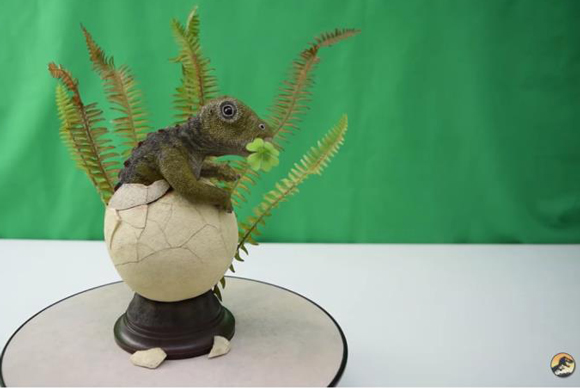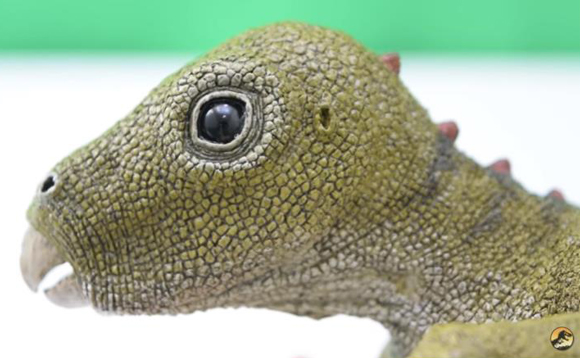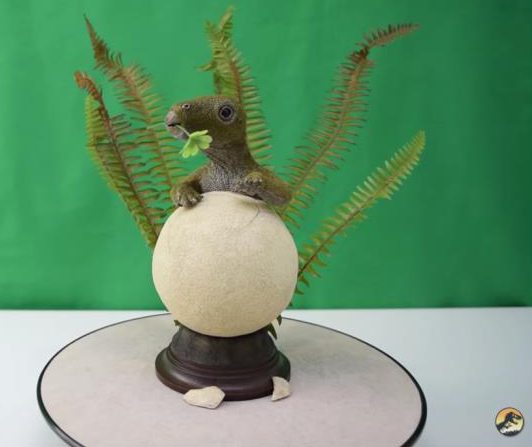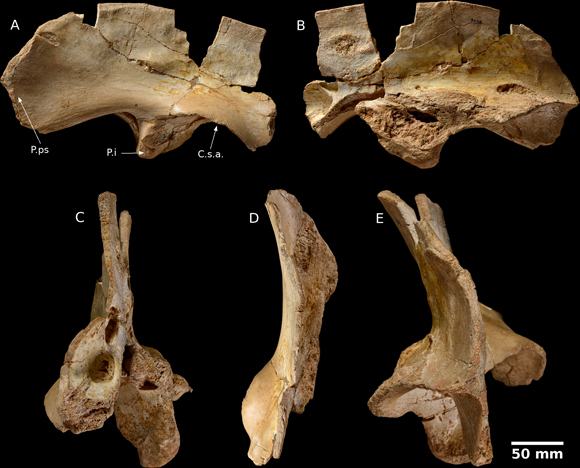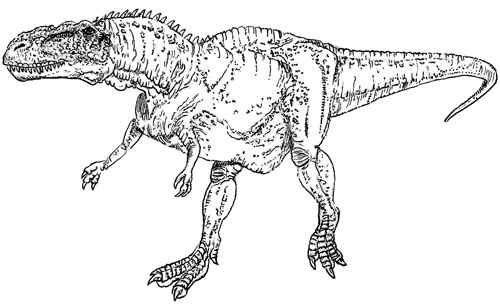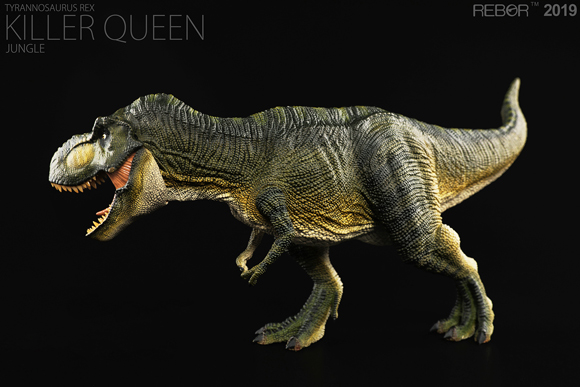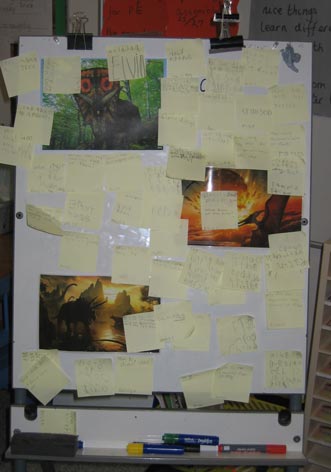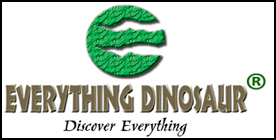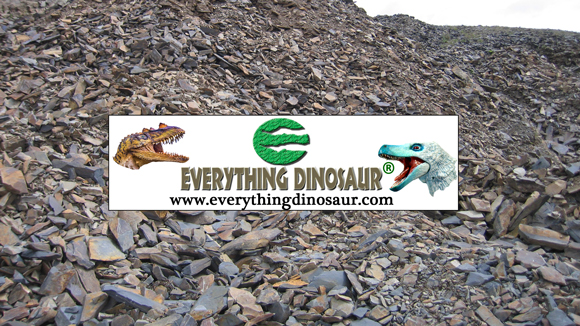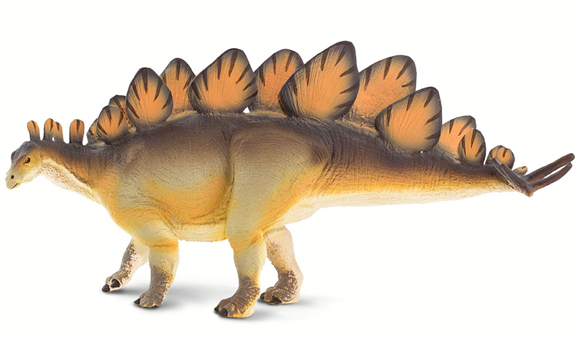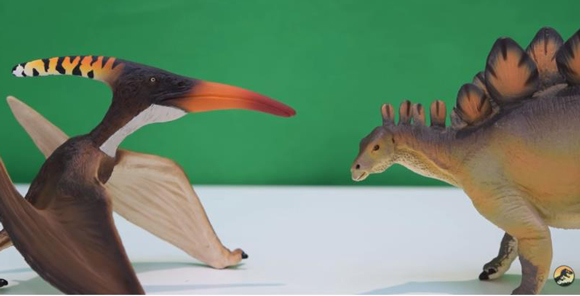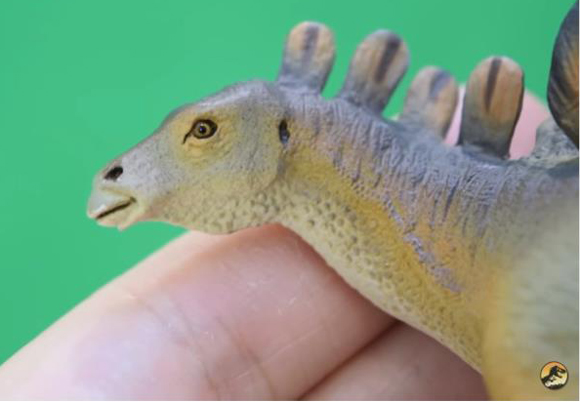A Late Cretaceous Dinosaur and Prehistoric Animal Diorama
Late Cretaceous Dinosaur and Prehistoric Animal Diorama
Our thanks to Robert who sent in to us a photograph of the dinosaur and prehistoric animal landscape that he had created. He has built a huge prehistoric landscape, complete with authentic Mesozoic vegetation, dinosaur footprints, flying reptiles and a watering hole. The talented model maker then created his very own Late Cretaceous prehistoric scene using his large collection of dinosaur and prehistoric animal models.
A Late Cretaceous Dinosaur and Prehistoric Animal Diorama
Picture credit: Robert
We think you will agree the results are very impressive.
A Creative and Imaginative Prehistoric Scene
A lot of care and thought has gone into making this creative and imaginative scene. Robert has been careful to research the prehistoric animals that his model collection represents and he has only featured models of prehistoric animals that would have lived in North America during the Late Cretaceous. The diorama features such famous dinosaurs as Tyrannosaurus rex, Triceratops, Styracosaurus and the armoured giant Ankylosaurus.
The prehistoric scene also features a large pterosaur replica. The pterosaur (Pteranodon sternbergi), has swooped down to the watering hole to take a drink, but it had better watch out as a large predator (Albertosaurus), is stalking it. On the ground, this flying reptile would have been vulnerable to attack from tyrannosaurids, let’s hope that it spots the danger in time and is able to take flight.
The Pteranodon is Being Stalked by an Albertosaurus
Picture credit: Robert
A Late Cretaceous Diorama
Our congratulations once again to Robert, for creating such a wonderful prehistoric animal diorama and that is a wonderful collection of dinosaur and prehistoric animal figures that you have got there.
For dinosaur and prehistoric animal models: Prehistoric Animal Models and Figures.
Visit the Everything Dinosaur website: Everything Dinosaur.


